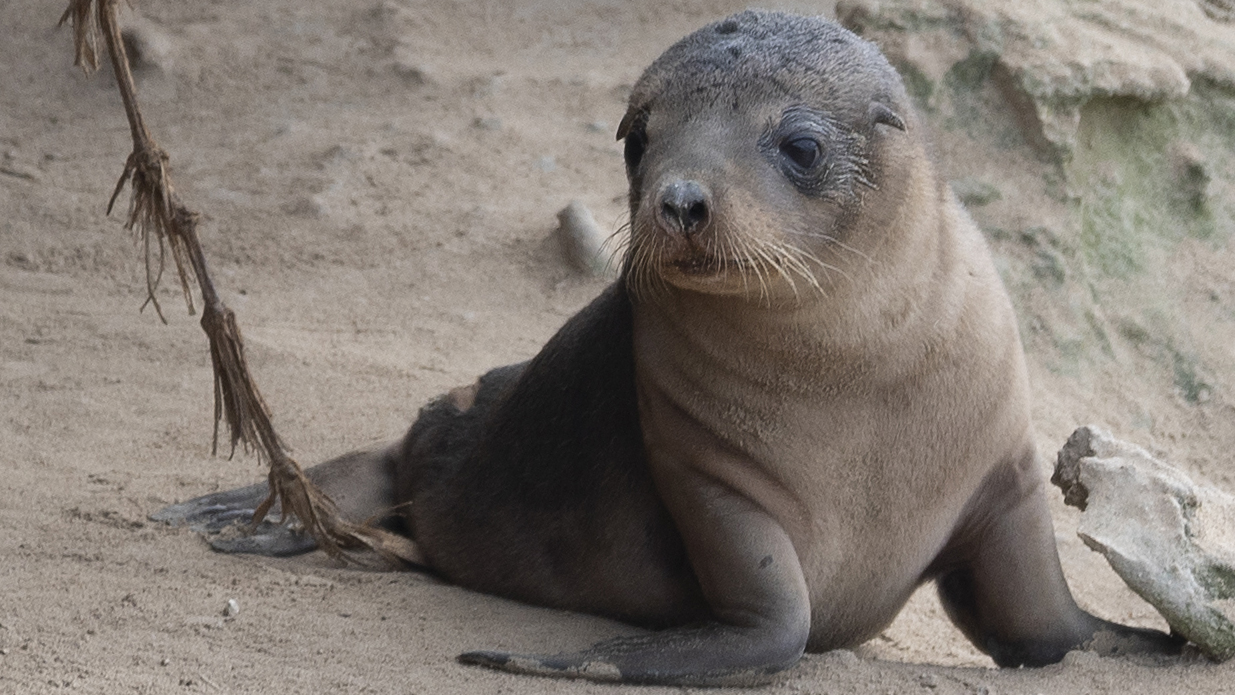Media Release
From: The University of Sydney- 100% of Australian sea lion pups suffer from hookworm
- Topical treatment could help endangered species recover
- South Australian government funding treatment trial
A world-first trial is under way to treat the Australian sea lion with a topical anti-parasitic in an attempt to rid the endangered species of debilitating hookworm infestation. The experiment is led by Dr Rachael Gray, from the University of Sydney School of Veterinary Science.
“The Australian sea lion is an endangered species, in part due to historical sealing in the 19th century, where whole colonies were wiped out. The numbers of Australian sea lions haven’t recovered since humans ceased hunting them and numbers are actually declining,” Dr Gray said.
“Hookworm infects the intestines of 100 percent of the Australian sea lion pups, leaving them weak, anaemic and with blood in their faeces. Many pups die directly from the hookworm.
“Our trial is using a novel and minimally invasive treatment for hookworm in pinnipeds [fin-footed marine mammals], that we apply to the skin on the back of the neck, then monitor what effect it has on pup mortality.”
The trial is taking place over two breeding seasons at Kangaroo Island, South Australia. It follows a successful trial of the injectable treatment in Australian sea lions, which was followed by a small pilot trial on Dangerous Reef in the Spencer Gulf using the topical application.
The current experiment is under way at Seal Bay on Kangaroo Island and is funded by the South Australian Government’s Department for Environment and Water, the Hermon Slade Foundation, and bequests from the University of Sydney School of Veterinary Science.
“Our team has previously shown that an injectable form of hookworm treatment is effective, but we have recently piloted a topical treatment of the anti-parasitic drug ivermectin – which is easy to apply on the skin of the sea lion pups – and found that it is just as effective as the injectable form at treating hookworm,” Dr Gray said.
“We’re looking at how eliminating hookworm can increase survival from other factors that are also killing sea lion pups, such as accidental injury from adults and the impacts of pollution. A system weakened by hookworm makes the sea lions more vulnerable to all sorts of other factors that can kill them.”
The team, including Dr Gray’s PhD students Mariel Fulham, Scott Lindsay and Shannon Taylor, are now setting up the first large-scale topical treatment and long-term seal and sea lion disease monitoring investigation anywhere in the world.
“We’re monitoring 180 sea lion pups, with half treated with ivermectin and half in the control group. We will monitor them for 18 months to see how the treatment not only improves pup health and growth, but also survival to breeding adult as part of a longer-term study. Hopefully this eventually aids the species’ population recovery.”
This project builds on nearly 14 years of strong, supportive and productive cooperation with the South Australian Department for Environment and Water, which manages the Seal Bay population of sea lions on Kangaroo Island. The project is also a collaboration with researchers at Macquarie University and the University of Adelaide.
VIDEO
Video at Seal Bay, Kangaroo Island with Dr Rachael Gray. 4min24s. With and without subtitles.
Download mp4 videos at this link. YouTube (subtitled) link here.
Video for social media or embed, 60seconds. In 16:9 and square ratio. Download at this link.
PHOTOGRAPHS of Dr Rachael Gray at Seal Bay, Kangaroo Island. Photos: Louise Cooper
Download photos at this link.




